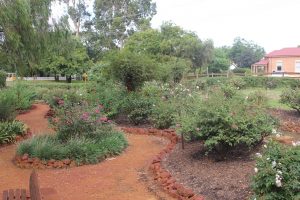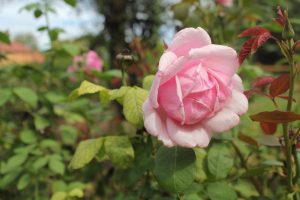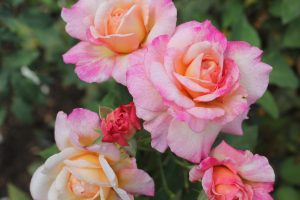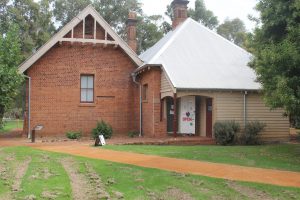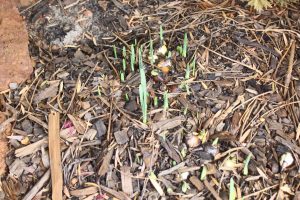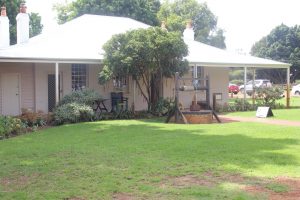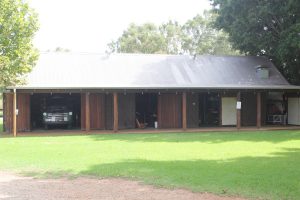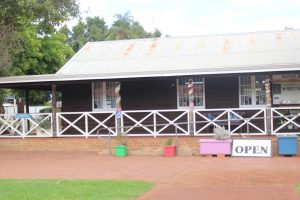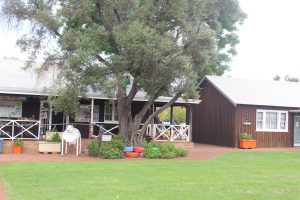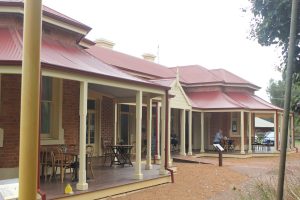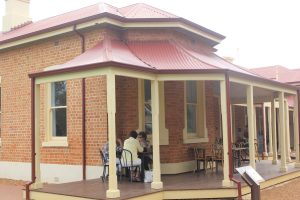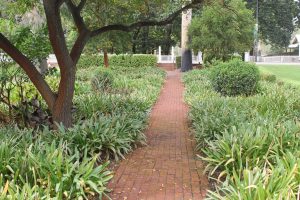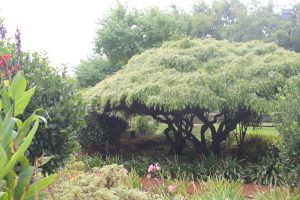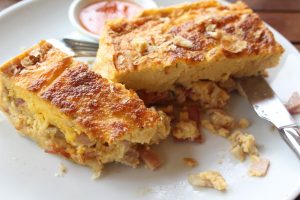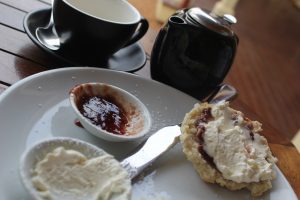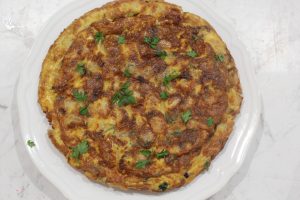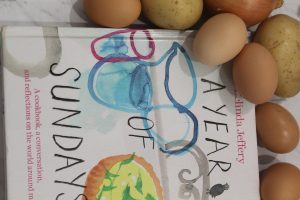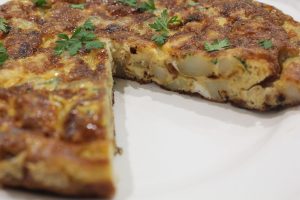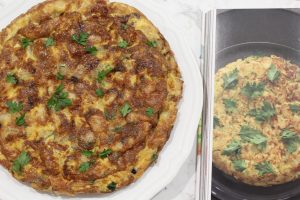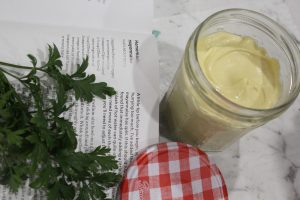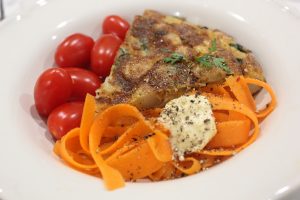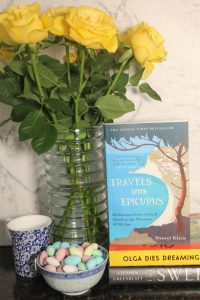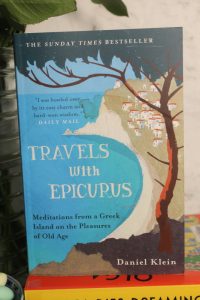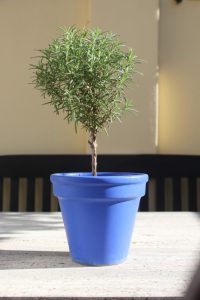tomato tarte tatin
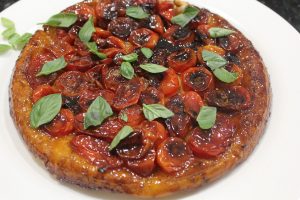

We are heading towards the end of the tomato season in Western Australia so I decided to make a Tomato Tarte Tatin before it’s too late. I reread the recipe in Belinda Jeffery’s A Lunch of Sundays and used it as a guide for making one, too. I made my favourite short, crumbly pastry, although I’m sure Jeffery’s is lovely. I don’t know where I originally got this recipe for Pate Brisée but it is the best, easiest, quickest ever. For a quiche size dish, you need 250gm plain flour, 125 gm butter, 1/3 cp cold water and a pinch of salt. Tip all the ingredients into the processor, pulse until clumped together, smooth into a ball in your hands then leave it in the fridge for an hour. ( I chop the butter and if it is very cold, microwave it for 10 seconds on high before adding to the processor. If the pastry is for a sweet dish I use unsalted butter).
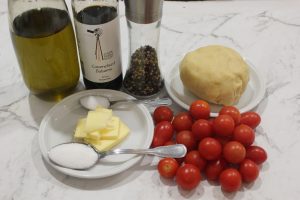

Olive oil, butter and balsamic vinegar, caster sugar and a pinch of salt for caramelising the tomatoes, plus the pastry. Grated pepper towards the end of cooking.
Jeffery’s recipe involves scraping the seeds and pulp out of the cherry or grape tomatoes using a teaspoon. I never do and the tart is still delicious. Find a recipe that suits your style of cooking .
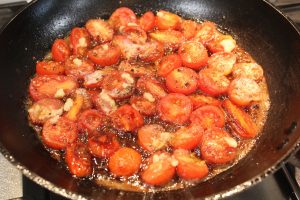

I like this tart as it’s popular with vegetarians and everyone else at the table. It’s delicious hot or cold. There’s lots of versions in recipe books and online with added ingredients but I make the original.
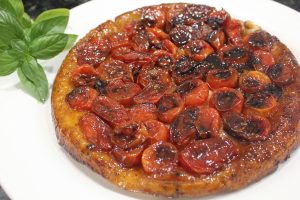

I don’t like wasting food, even if it is a small ball of leftover pastry. I rolled it out, made a mini flan and filled it with sun dried tomatoes and snipped spring onion and baked it in the oven with the tart. It was delicious, too!
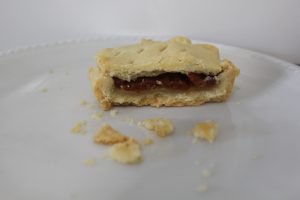

When I think of Italian cuisine I think of tomatoes. Recently, my husband read me a paragraph from the book he was reading which mentioned the introduction of the tomato to Italy in the 16th century. What! Tomatoes are to Italy what kangaroos are to Australia, surely?
Apparently tomatoes were introduced to Italy from the Americas. These early tomatoes were about the size of a cherry tomato and were yellow. They were called Pomo d’oro, or golden apple. These involved into the red pomodoro we know and love today.
nigella’s chocolate cake
Searching through my remaining recipe books recently to find my handwritten pastry recipe I found a a Nigella Lawson book I used quite often then forgot about. It survived the great ‘sort and discard’ which reduced my recipe book library by about half two years ago. Due for another purge as I tend to look up recipes online now or make old favourites.
Needing a part birthday cake, part Easter cake I settled on Nigella’s Chocolate Cake With Coffee Buttercream (p244) recipe from her book, At My Table. This is an odd cake mixture. The wet ingredients are added to the dry ingredients and the mix is very, very sloppy. Her recipe was baked as two cakes with a butter cream filling and icing. I don’t have two same sized cake tins so settled on a large bundt tin.
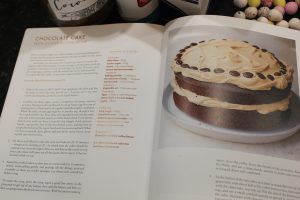

A most surprising cake! It cooked in about 30 minutes and was still moist and luscious days later. It was a very big cake! It looks good and tastes good. If I’d been thinking I would have cut it in half, one half for eating over the weekend and one half for freezing.
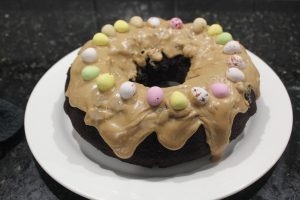

the labyrinth
This very engaging book by Amanda Lohrey is about love, loss and finding peace. This sparsely told story is about a mother, Erica, dealing with her revengeful son being imprisoned, but it’s also about her own developing creativity. She researches, designs and eventually builds a labyrinth along side the old, rustic house she buys to be near her son, who is in prison.
The descriptions of the landscape and the people Erica meets are richly described as this story evolves. Erica is scarred by her own mother leaving the family when she was small and then discovering as an adult that she’d died two years after leaving, so no chance of reconciliation. The father of her son had also disappeared when the boy was two resulting in anger and confusion. So, no happy endings, really, but a well written story.
ANZAC DAY
Australia and New Zealand commemorate ANZAC Day (Australian and New Zealand Army Corps) on the 25th of April. Traditionally services were held at local war memorials and in capital cities, but Covid has changed that recently. Now, people stand at the end of their driveways holding candles and listen to the buglers playing the Last Post ( lights out) and Reveille (get up!).
Image: Unsplash
We then sat on the verge enjoying coffee and a chat with our wonderful neighbours. This year we were better organised with chairs, a table and coffee machine and everyone brought food to share. Dawn broke with a pink and purple striped sky and a memorable, lovely picnic followed.
did you know?
Tasmania has the cleanest air in the world?



